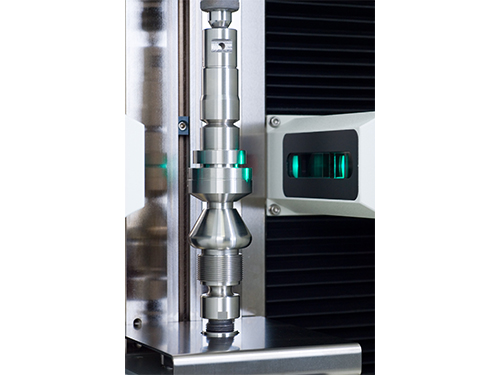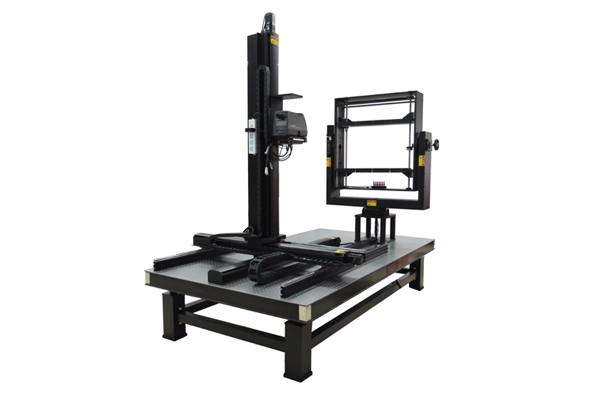How optical measurement system integration leads to fewer recalls
How optical measurement system integration leads to fewer recalls
Blog Article
The Duty of Optical Dimension Solutions beforehand Metrology Techniques
Optical measurement systems have actually changed assessment, bringing a degree of precision that was once unimaginable. As you discover additionally, you'll discover just how these systems are shaping the future of dimension and high quality control.
The Advancement of Assessment: A Historic Point Of View
As you discover the history of width, you'll find that its advancement reflects humankind's pursuit for precision and standardization. From old civilizations utilizing body components as systems of measurement to the growth of standardized weights and procedures, each action shows our wish for precision. The Egyptians built the pyramids utilizing specific measurements, while the Romans advanced design with their sophisticated measuring tools.
Throughout the Renaissance, clinical breakthroughs moved the emphasis towards extra empirical methods, paving the means for modern-day metrology. The introduction of the statistics system in the late 18th century marked a considerable turning point, establishing global requirements. Throughout the 20th century, technical advancements even more changed width, making it possible for highly accurate measurements in different fields.
Today, assessment proceeds to advance, incorporating digital technology and automation. This history highlights not just the importance of measurement but likewise our unrelenting search of improving accuracy and consistency in our increasingly complex globe.
Concepts of Optical Dimension Equipments
Comprehending the concepts behind optical measurement systems is important for accurate lead to metrology. You'll wish to think about basic optical concepts, dimension accuracy elements, and effective system calibration strategies. Each of these components plays a vital duty in guaranteeing your measurements are precise and reputable.
Fundamental Optical Concepts
While checking out optical dimension systems, you'll experience basic optical principles that develop the foundation of accurate data procurement. Light acts in predictable methods, and recognizing these behaviors-- like refraction, diffraction, and reflection-- is essential for efficient measurements. By grasping these concepts, you'll be equipped to utilize optical modern technologies successfully, paving the way for advancements in assessment and ensuring your dimensions are both repeatable and trustworthy.
Dimension Accuracy Elements
To achieve high measurement precision in optical systems, a number of elements come into play, affecting the dependability of your results. Top quality lenses and detectors reduce aberrations and sound, ensuring your dimensions are exact. By dealing with these factors, you can boost the general efficiency of your optical measurement systems, leading to even more precise and dependable outcomes in your metrology applications.
System Calibration Strategies
Achieving high measurement accuracy is just component of the formula; appropriate system calibration methods are similarly important in optical measurement systems. Next, use well-known dimensions to confirm the system's outcome and make necessary adjustments. With these techniques, you'll enhance the reliability of your optical dimension system.
Trick Technologies Behind Optical Measurement
Optical measurement systems rely on numerous essential modern technologies that boost precision and effectiveness in metrology. One essential modern technology is interferometry, which makes use of the interference of light waves to measure tiny variations and surface abnormalities with extreme precision. You'll additionally discover laser scanning systems, which capture thorough 3D data of objects swiftly, making them vital for dimensional analysis.
In Addition, CCD and CMOS sensors play a significant duty in converting light right into electrical signals, enabling high-resolution imaging and exact measurements. Advanced formulas for image handling even more boost measurement precision by examining data in actual time, filtering out sound and improving functions.
Lastly, fiber optics offer adaptability and the capability to gauge in challenging settings while maintaining signal stability. By leveraging these technologies, you can accomplish premium cause your width tasks, making sure that your dimensions are both reputable and exact.
Applications of Optical Dimension in Industry
As markets significantly demand precision and effectiveness, the applications of optical dimension systems have come to be essential across numerous industries. In production, these systems aid you keep track of dimensions and tolerances in real-time, ensuring quality assurance without lengthy hand-operated checks. In the automobile market, optical dimensions aid in straightening components with precision, improving security and efficiency.
In electronic devices, you're making use of optical approaches to inspect minute features on circuit boards, discovering flaws that can bring about failings. The aerospace field benefits from non-destructive screening techniques, allowing you to assess products and elements without endangering their honesty.
Optical dimension additionally plays a vital duty in fabrics, making certain textile measurements satisfy precise specs. optical measurement system. With their capability to supply high-resolution data reference rapidly, these systems equip you to make informed decisions, streamline procedures, and eventually drive advancement across your industry
Enhancing Precision and Performance in Dimensions
When you think of improving precision in dimensions, accuracy in your measurement methods is vital. By simplifying these processes, you can accomplish quicker outcomes without sacrificing top quality. Allow's check out how taking on innovative optical measurement systems can elevate both precision and effectiveness in your job.
Accuracy in Measurement Strategies
Accuracy in dimension strategies is essential for accomplishing trustworthy outcomes in width, specifically since small discrepancies can lead to considerable errors. By using advanced optical measurement systems, you can enhance the accuracy of your measurements. In enhancement, precise dimensions permit you to keep top quality control, ensuring that products fulfill stringent specifications.
Streamlining Dimension Procedures
To boost precision and effectiveness in measurements, improving your measurement processes is important. Start by taking on optical dimension systems that supply real-time information, minimizing the time invested in hand-operated recording. These systems commonly integrate flawlessly with existing software application, permitting you to automate information collection and analysis.
Next, standardize your measurement protocols. By executing regular procedures, you lessen variability and improve repeatability. Do not fail to remember to consistently adjust your equipment to ensure its precision.

The Effect of Optical Dimension on R & D
As scientists undertaking to push the boundaries of advancement, optical dimension systems have actually become vital devices in the development process. These systems supply you with specific, real-time information that boosts your capacity to examine intricate products and frameworks. In various fields, from biotechnology to aerospace, you rely upon optical measurements to optimize layouts and enhance product performance.

With high-resolution imaging and non-contact methods, you can reduce sample disturbance, enabling for more precise results. This capability to catch minute details accelerates your R&D cycle, letting you iterate designs quickly and efficiently. Optical dimension fosters collaboration throughout techniques, as the information produced is commonly quickly interpretable and shareable.
Eventually, integrating optical measurement systems right into your study not just improves productivity but additionally grows your understanding of the phenomena you study. By leveraging these advanced strategies, you're much better furnished to innovate and remain in advance in a competitive landscape.
Future Fads in Optical Dimension Solutions
With the rapid innovation of innovation, you're likely to see significant shifts in optical measurement systems that will redefine their application throughout different industries. You'll see an approach increased automation and assimilation of expert system, permitting real-time data evaluation and enhanced precision. Miniaturization is one more fad; small tools additional resources will make it possible for measurements in tighter spaces, making them ideal for areas like aerospace and biomedical applications.
Moreover, the arrival of advanced products, such as photonic crystals, will enhance level of sensitivity and resolution. Expect to see systems that can run in challenging atmospheres, giving trustworthy dimensions in extreme problems. Cloud-based analytics will certainly also play a crucial role, providing you accessibility to large datasets for much better decision-making. As these modern technologies converge, you'll find that optical measurement systems not just enhance precision however additionally streamline process, inevitably driving development and effectiveness in your tasks.
Often Asked Concerns
Exactly How Do Optical Dimension Solutions Compare to Typical Measurement Techniques?
Optical measurement systems offer greater precision and faster results compared to standard techniques. You'll locate they capture more information factors properly, reducing human mistake and increasing reliability, making them a preferred choice in numerous applications.
What Industries Advantage The Majority Of From Optical Dimension Equipments?
You'll locate sectors such as aerospace, automobile, and electronics benefit most from optical measurement systems. These sectors depend on specific dimensions to ensure high quality and performance, enhancing performance and lowering expenses with advanced modern technology.

Are Optical Dimension Solutions Expensive to Implement?
Optical dimension systems can be expensive to carry out, but their accuracy and efficiency commonly justify the price. Investing in such modern technology can result in substantial long-term cost savings and renovations in quality across various applications.
What Skills Are Called For to Operate Optical Measurement Equipments?
To operate optical measurement systems, you'll require strong analytical abilities, focus to detail, and effectiveness in software tools. Familiarity with optics and an understanding of dimension concepts will likewise boost your effectiveness and efficiency.
Exactly How Do Ecological Factors Impact Optical Measurements?
Ecological variables like air, temperature, and humidity high quality can misshape optical dimensions. You'll observe variants in precision as a result of light interference or refraction. optical measurement systems. Preserving stable conditions is vital for precise and dependable optical measurement results
Final thought
In summary, optical measurement systems are transforming assessment by supplying unequaled accuracy and effectiveness. By taking advantage of sophisticated principles and innovations, these systems enhance accuracy while minimizing disruptions in numerous sectors. As great post to read you discover future patterns, you'll see exactly how the combination of AI and automation will remain to boost dimension techniques, driving innovation and improving quality control. Embracing these advancements will certainly be necessary for staying competitive and achieving quality in your field.
Attaining high dimension accuracy is just part of the formula; proper system calibration strategies are similarly vital in optical dimension systems.When you think regarding enhancing precision in measurements, accuracy in your measurement strategies is necessary. By utilizing innovative optical measurement systems, you can improve the accuracy of your dimensions.To improve precision and effectiveness in dimensions, improving your dimension processes is necessary. How Do Optical Dimension Equipments Compare to Typical Measurement Techniques?
Report this page